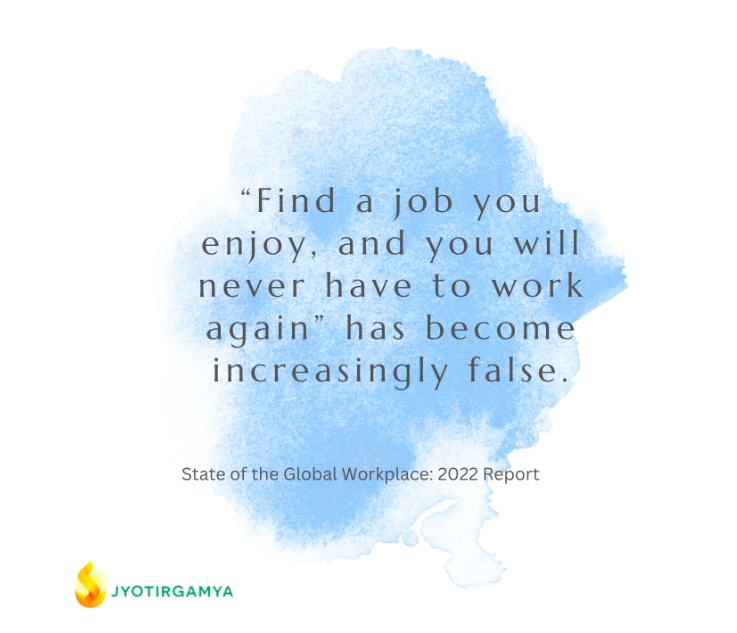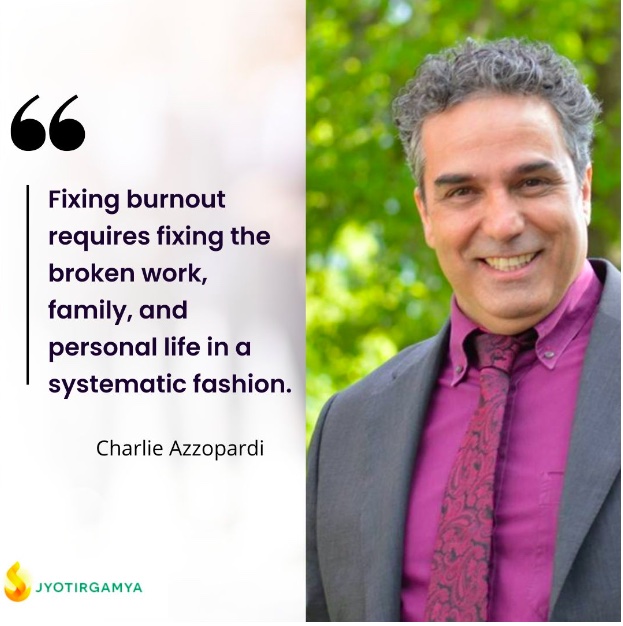A Systemic Approach to Addressing Burnout
Introduction
Burnout is not a new phenomenon, but the COVID-19 pandemic has undoubtedly brought it to the forefront of our collective consciousness. With the shift to remote work, burnout has taken on a new form, adding to the already increasing rates of burnout worldwide. According to the World Health Organisation, 75% of workers globally have experienced burnout at some point, and the pandemic has only intensified this issue. Burnout is not limited to any specific work context; anyone can be affected, regardless of their profession. It is a complex phenomenon that affects not only work but also family relationships. The systemic and relational nature of burnout requires a comprehensive and systemic approach to address it. This post will explore the factors contributing to burnout and what it takes to improve the situation.

The World Health Organisation declared in 2022 that 75% of workers worldwide had experienced burnout at some point. 83% of these employees believe that burnout impacted their relationships negatively. No specific work context is notably more vulnerable to burnout than others, and the difference in vulnerability between professions is little. Clinical experience has taught us that burnout can afflict anyone in any position or job. The COVID-19 experience has pushed many of us to work from home. And while for some, this has been a blessing, we are now being faced with another type of burnout - Working from home or remote work burnout.
We gather from research and clinical practice that burnout is highly related to working and often affects family relationships. McKinsey and Company described burnout as ‘the great exhaustion,’ Their findings support WHO’s findings that the pandemic has changed the face of burnout. They identified that retail, manufacturing, and healthcare environments experienced intensified burnout.
The Global Workplace Report reported 2020 as the year reaching a record high in burnout. Amid the coronavirus outbreak, 43% of people from 100 countries claimed to have experienced workplace burnout. What worries me professionally is that 36% of workers reported that their organizations have nothing to help prevent burnout or support burnt-out employees.
At Workplace Wellbeing, we offer various proposals that help large and small organizations care for employees at all levels. Mental Health, while also becoming a tedious buzzword, is increasingly being challenged by the millions of sufferers in the workforce. The standards of organizations are now measured in terms of their products or services and by their threshold to endure and support the mental well-being of their employees as measured in different forms.
Technology, with all its best intentions, did not help reduce burnout. As it became increasingly integrated into all kinds of work, it isolated people even at the workplace, let alone when working from home. The increasing technology complexity is understood to serve the profession and productivity, not employees or clients. Take banking as an example. The fact that one can bank from home is topping what people already have to do and serving the banks with fewer costs and increasing profits. If you think about it, however, we are doing the bank’s job now, banking for ourselves, and being charged for it too.
Technology also robbed people of one of the strongest anti-stressors and anti-burnout activities that hobbies can be. People spend more time using their mobile, tablets, and computer than socializing, building scale models, collecting stamps (do they exist anymore?), doing crochet or knitting, or flying a radio-controlled aircraft. In this way, technology robbed away the joys of ‘free time’ and socialization. It denied the younger generations the soft skills necessary for basic human survival biologically determined by human contact.
The statement “Find a job that you enjoy doing, and you will never have to work again in your life” has become increasingly false (State of the Global Workplace: 2022 Report). Since the same technology we use for work is the same for leisure, we robbed ourselves of the leisurely aspect of technology and imbued it with the stress and worry we associate with work.
From my systemic perspective, burnout is the symptom of many factors connected in a patterned and timely way that spiral into increased stress, culminating in manifest signs of self-redundancy and exhaustion. Consider how we are all vulnerable to being burnt out with contemporary western lifestyles. The State of the Global Workplace: 2022 Report shockingly announces that most employees globally generally find their work meaningless and unrewarding, feel that their lives are not going well, and feel hopeless about the future. Without going into much detail, I summarize this experience as “all work and no play makes Jack a dull boy.”
Of course, this ‘dullness,’ or burnout, is not only reserved for men. On the contrary, women, caught between the pressures of traditionalism and post-modernity, are also paying a high price. Women are more likely than men to suffer burnout. Women in leadership are especially vulnerable to burnout. Having young children to rear especially positions women in the vulnerable category.
These numbers and phenomena increasingly connect the three significant burnout faces systemically. Work, life, and family well-being, or relationships, are the most critical contributors to burnout. These are embedded in the broader context of political, social, cultural, religious, and the many other interconnected systems we live in.
So what does it take to improve the situation? Why is it so difficult? Why is the world closer to colonizing Mars than to fixing the world’s broken work, family, and personal life-patterned relationships? And because they are so connected, fixing anything of the three requires setting them all together systematically. This is the point that most of us miss. The broader context is encircling burnout. From this perspective, burnout becomes a social and relational phenomenon rather than simply located in the sufferer’s mind, the symptom bearer. This perspective is essential because it is responsible for everyone in the picture, not just the suffering person.
For example, we live in social and political systems that focus primarily on money. Well, the economy is the politically correct term. Most countries, including all the EU states, maybe especially the EU, boast about being economy-based societies and not family-based societies or person-centered societies in which politicians only measure their success by the increased economy they call GDP. The only measure is work. Pay and demographics are the only metrics. So how can politicians convince us that keeping people happy at work and caring for them and their beloved families is the primary focus of the economy?
Eradicating burnout, therefore, requires the effort of all. Politicians, workers, employers, employees, educators, the religious, self-employed, etc. Psychological therapies alone often make the mistake of lip-serving the burnout-generating systems by helping individuals cope with increasing work demands. They often subscribe to pathological models of burnout and comply with the view that there is something wrong with the person. The wrong is with the whole system and not with the person.
What needs to be done is simple, and I divide it into three generic areas:
-
Improve political systems and direct political energy towards the family’s and its people’s well-being.
-
Improve leadership in the workplace and direct it towards improved support to workers and their families.
-
Improve people’s skills in managing stress and tensions according to their job and life. There is no ‘one size fits all’ technology.
Conclusion
In conclusion, burnout is a complex phenomenon that affects individuals regardless of their profession, and it has become even more prevalent due to the COVID-19 pandemic. Burnout affects work and personal relationships, making it a systemic and relational issue requiring a comprehensive approach. While technology may have made our lives easier in many ways, it has also contributed to burnout by isolating individuals and robbing them of their leisure time. Additionally, women, especially those in leadership roles or with young children, are more vulnerable to burnout. Organizations must prioritize employee well-being and implement measures to prevent and address burnout. Fixing the broken work, family, and personal life-patterned relationships may seem daunting, but it is necessary for a healthier and more sustainable future.
About the Author

Dr. Charlie Azzopardi is a highly accomplished Systemic Family Therapist who has dedicated his career to working with families in the addictions field. He has pioneered the development of several family therapy services, including the San Blas Therapeutic Community, Programme Spark, and the Family Therapy Services at Sedqa and Vincent Square Clinic in London. Dr. Azzopardi has also been involved with various local services, including Sedqa, Cana Movement, Richmond Foundation, Appoġġ, Eden Foundation, Caritas, and several private and public schools.
Dr. Azzopardi studied Psychology at the University of Malta and Family Therapy at the Institute of Psychiatry in London. He obtained his Doctoral degree in Systemic Psychotherapy, Couple & Family Therapy from the University of East London. Dr. Azzopardi is also trained in other therapeutic modalities, including CBT, Brief Solution Focused Therapy, DBT, Strategic Therapy, Dialogical Therapy, and others.
In 2010, Dr. Azzopardi founded the Institute of Family Therapy Malta and introduced the first Accredited Professional Masters Training in Systemic Family Psychotherapy on the Island. He now teaches and practices within the Institute and continues promoting projects that improve family life quality.
Dr. Azzopardi is a highly sought-after speaker and has presented in various seminars and conferences about social problems, drug addiction, the family, and family therapy. He has also appeared on many TV shows, intending to generate awareness on how to achieve better relationships in family life. Dr. Azzopardi’s contributions to the field of family therapy have been immense, and he continues to work towards improving the quality of life for families and children.